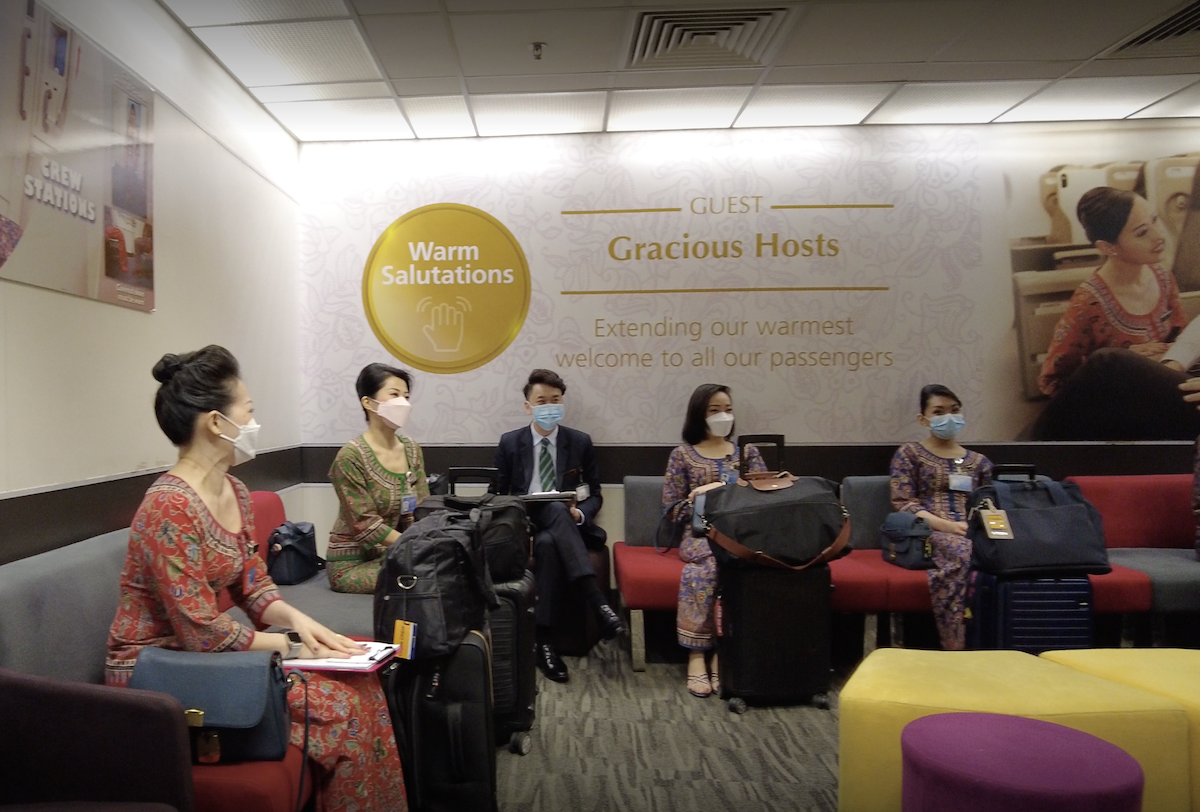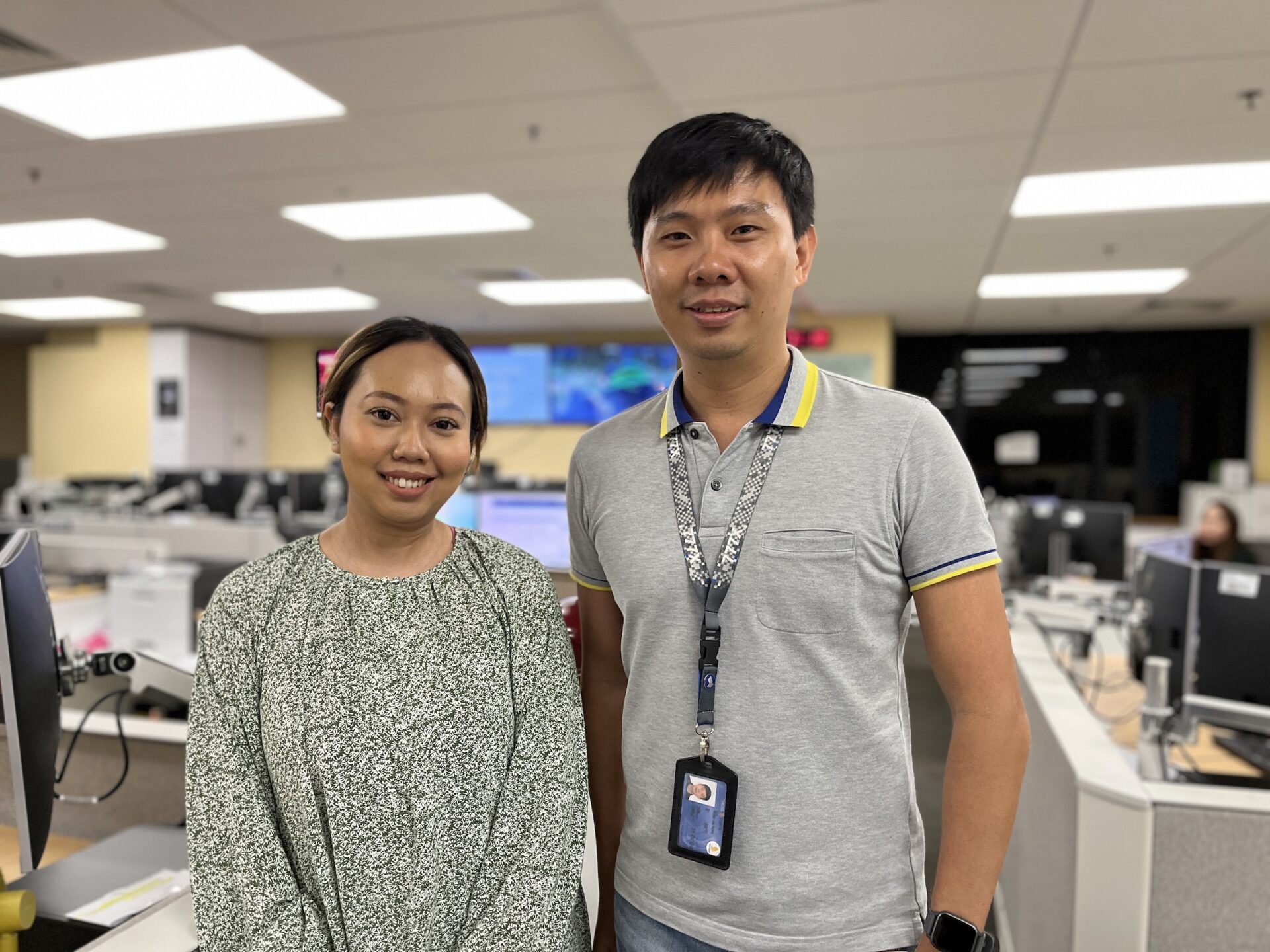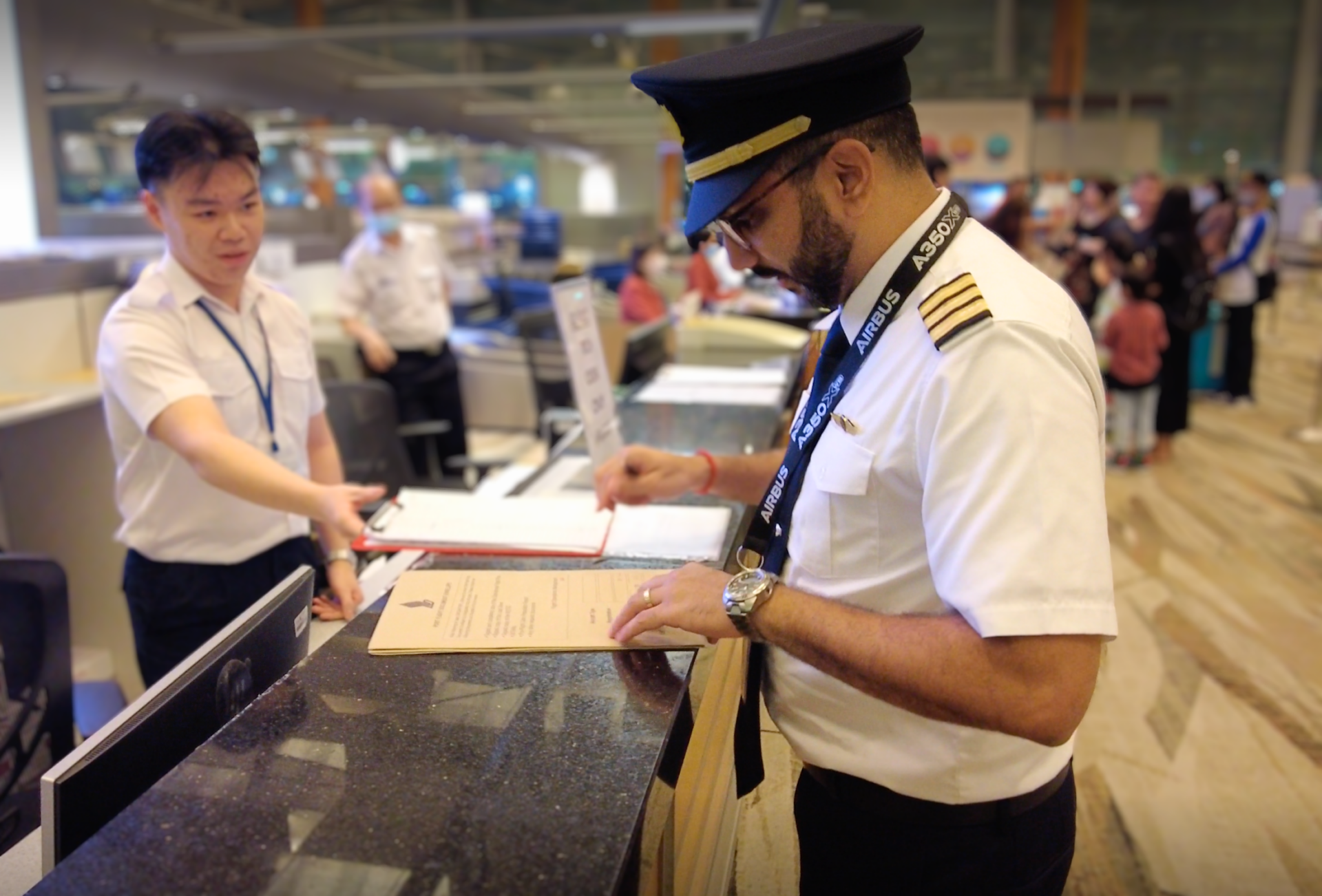Running a major international airline is no easy feat. From flight planning to crew schedules, there is a colossal joint effort behind the scenes at Singapore Airlines (SIA) to make sure everything runs smoothly.
With flights departing and arriving day and night, multiple teams work round-the-clock to ensure this well-oiled machine ticks no matter the time. In fact, certain teams at SIA work deep into the night to support airline operations.
In this exclusive feature, we speak to Associates Benson Khoo and Umar Nagaratnam (pictured above) at the Cabin Crew Control Centre, as well as Senior Executive Jim Wong and Lead Flight Dispatcher Nabilah Anuar from the Flight Dispatch team for a glimpse of what goes on behind the scenes during the night shift at SIA.

Ensuring flights are fully staffed
Housed within Changi Airport Terminal 3, the Cabin Crew Control Centre ensures that all flights are staffed with the correct number of cabin crew and that all crew-related operations run smoothly. With almost 8,000 cabin crew members, this is a massive undertaking that requires both the high-tech wizardry of data analytics and the resourcefulness of human employees.
“We are trained to manage crew rosters, and make sure that flights depart with sufficient or the optimum number of cabin crew,” says Associate Umar Nagaratnam, who has been with SIA for 38 years, 17 of which have been with Control Centre.
With the possibility of additional challenges such as flight delays, cancellations and diversions, it takes someone with a cool head to manage the demands of the role.
“On this job, time is of the essence,” says Associate Benson Khoo. “Whenever a cabin crew member reports sick, we’ll have to activate other crew members on standby to make sure they report for their flights on time.”
Charting the right flight path
For every aircraft that takes to the sky, a lot goes on behind the scenes at the Flight Dispatch department to ensure an efficient flight plan.
“When pilots fly from point A to B, they will have to fly over many countries,” explains Senior Executive Jim Wong. “We [map this out] on a flight plan and submit it to Air Traffic Control.”

A seasoned expert, Wong makes it sound simpler than it is. During flight planning, a flight dispatcher must also take into consideration the payload, environmental conditions, aircraft performance and route availability, among other factors. He or she also has to monitor meteorological data and weather events such as typhoons and volcanic activity to ensure a safe flight path is planned for each flight.
Lead Flight Dispatcher Nabilah Anuar, who is entering her sixth year with the Flight Dispatch team, says she actually prefers doing the night shift. “In the mornings, you get both long- and short-haul flights,” she says. “At night, it’s a mix as well but the gap between each flight is longer.”

But that doesn’t mean the night shift runs low on work. In fact, the dark hours are a critical time for preparing for the morning rush of operations at the Singapore hub. Aircraft changes and the pre-planning of long-haul and ultra-long-haul operations take place at night using advanced flight planning tools to further optimise flight paths. These include flights to and from Europe and the United States.
“We are doing the backend work that make the morning shift a lot more pleasant,” Anuar says.
The Flight Dispatch department is just one of many teams who work through the wee hours to ensure operational continuity at SIA. In the next edition, we find out what goes on behind the scenes at the Operations Control Centre and the Customer Care Team.
The post How the night shift at Singapore Airlines keeps operations ticking all day long appeared first on SilverKris.
from SilverKris
No comments:
Post a Comment